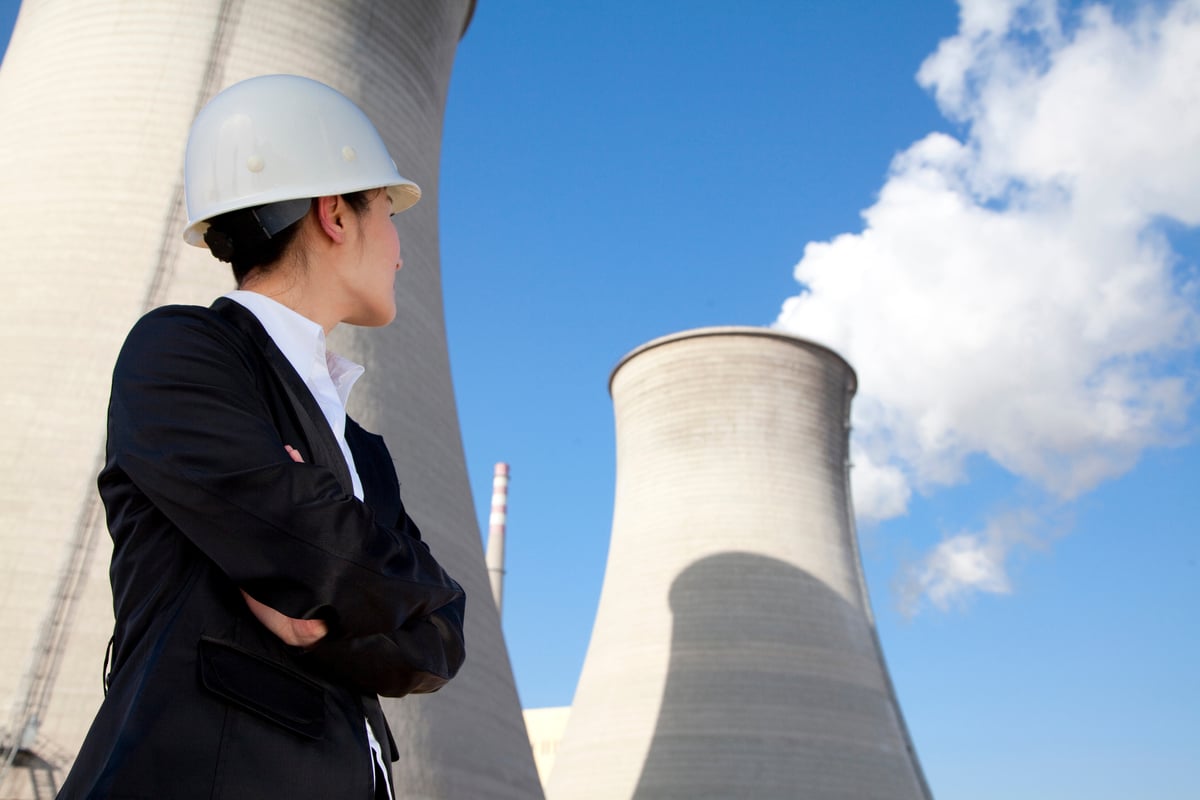When it comes to green energy, most people think of automobiles when they hear the word hybrid. That may be changing soon, though. Hybrid power plants, fossil fuel and solar power, may be the new association.
Most of the time when people are referring to utiltiy-scale solar projects, they imagine photovoltaic, or PV, systems—the same basic systems, rows of solar panels, that you would see on a neighbor's roof, just on a much larger scale.There is another system, though.
Instead of using solar panels, concentrating solar power, or CSP, technology uses mirrors, which reflect sunlight and collect the generated solar heat to produce electricity. Most of these systems incorporate thermal energy storage systems, which enable utilities to provide solar-generated electricity even when the sun isn't out. According to the Energy Department, there are currently 800 MW of CSP plants, which are in operation throughout the U.S. When the four projects, which are in development right now, are completed, the CSP capacity will rise to 1.8 GW. But, this may just be the beginning.
Right now, between 11 and 21 GW of existing fossil fuel plants in the U.S. could be retrofitted with CSP systems—these hybrid systems would produce enough electricity to power between 3 million and 6 million homes. More importantly, it provides an opportunity for utilities that are currently uninterested in solar power systems to go solar—if for no other reason than to improve the efficiency and performance of their current facilities.
Concentrating on the possibilities
The Energy Department sees the development of hybrid facilities, part CSP and part fossil fuel, as a real possibility. It recently announced that it will be investing $10 million in a new CSP project led by the Sacramento Municipal Utility District. Integrated with the utility's 500 MW natural gas-fired Consumnes Power Plant, the CSP technology will help generate an extra 10 MW of electricity for the facility. The Energy Department believes that the project will help to design, construct, and test cost-competitive CSP – fossil fuel systems in the U.S. Unlike PV technology, choosing to invest in CSP technology is not as simple as finding manufacturers of the mirrors, for there are no publicly traded companies that afford this opportunity.
Who sees a bright future this?
Although not developing a hybrid plant, one utility that is investing in CSP technology is NextEra Energy (NEE 0.63%). Located in southeastern California, the 250 MW Genesis Solar Energy Project will be able to power about 88,000 homes annually. NextEra Energy received $852 million from the Department of Energy as a partial loan guarantee to help with the construction of the site. The project is a large component of the 900 MW of solar powered-generation that it expects to bring online through 2016.
Florida Power and Light, one of NextEra's subsidiaries, does have a hybrid system in operation. The Martin Next Generation Solar Energy Center is the first hybrid facility in the world to connect a solar facility to an existing fossil fuel plant. The facility produces 75 MW of solar power that helps to directly displace some of the fossil fuel usage.
The principal subsidiary, NextEra Energy Resources, does not have solar as a sizable position in its diversified energy portfolio -- only 1%; the majority of the portfolio is wind, which represents 57%. Natural gas represents 23%, though, and with CSP experience, the possibility exists that the company retrofits some of its natural gas facilities with CSP technology.

nexteraenergy.com
Another utility that is adopting CSP technology is NRG Energy (NRG +1.27%). Having received a partial loan guarantee of $1.6 billion from the Department of Energy in April 2011, NRG recently confirmed that the 377 MW, Ivanpah Solar Electric Generating Station, has demonstrated operational readiness in September and believes that it will be fully operational in the fourth quarter. NRG and co-owners, BrightSource Energy and Google, have secured power purchase agreements, or PPAs, with Pacific Gas and Electric and Southern California Edison. Ivanpah, in addition to another solar project, is expected to result in run rate cash available for distribution of $45 million post-2014.
A test case
In 2010, Xcel Energy (XEL 0.24%) tested a hybrid solar – coal approach when it constructed the Cameo Generating Plant. Although the plant was dismantled, Xcel found that the generated solar power increased the plant efficiency by 1% and replaced more than 260 tons of coal; however, this was not as substantial as what Xcel was expecting. As a result, Xcel has no intentions of developing another hybrid, CSP-fossil fuel, plant. It did find, in the final report on the project, that in the future technological improvements may make the system cost-effective enough to warrant another attempt.
Looking down the road
For those uninterested in investing in a utility, one possibility is choosing the company directly responsible for the development of the entire facility. GE (GE +1.90%) is planning on beginning operations of the world's first Integrated Renewables Combined Cycle, or IRCC, power plant in 2015. Located in Turkey, the 530 MW facility, which is expected to provide an unprecedented 70% efficiency, will use 22 MW of GE wind turbines, and 50 MW of CSP technology, which will be provided by eSolar, a provider of CSP technology, in which GE has an investment and licensing agreement. According to the company, "GE will license and incorporate eSolar technology and software into its IRCC and stand-alone solar thermal power plants." This suggests that GE does not envision the project in Turkey as a stand-alone operation, but rather the beginning of a new era in power plant development.









